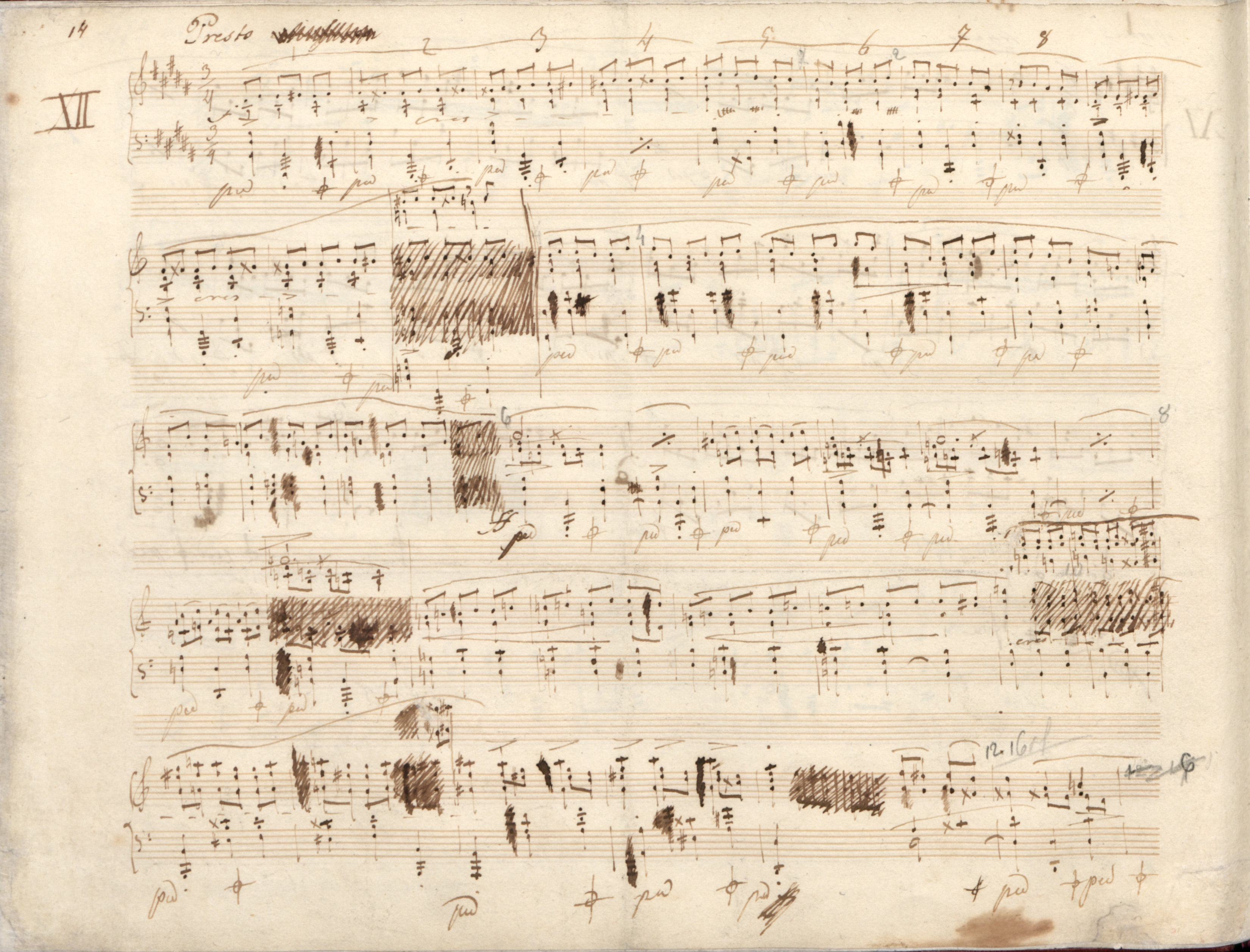Op. 2, Variations in B♭ major
Op. 10, 12 Etudes
Op. 11, Concerto in E minor
Op. 21, Concerto in F minor
Op. 22, Polonaise in E♭ major
Op. 24, 4 Mazurkas
Op. 25, 12 Etudes
Op. 26, 2 Polonaises
Op. 27, 2 Nocturnes
Op. 28, 24 Preludes
Op. 30, 4 Mazurkas
Op. 35, Sonata in B♭ minor
Op. 50, 3 Mazurkas
Op. 63, 3 Mazurkas
Op. 64, 3 Waltzes
(Op. 4), Sonata in C minor




Op. 28 No. 12, Prelude in G♯ minor
The missing accent and staccato dots in FC (→GE) are most probably an oversight of Fontana, particularly since the dots in A are very poorly visible in this bar. In turn, the missing accent could be related to Fontana's conviction that the accents in this theme refer to the R.H. – see the note in b. 4 – hence he did not expect such marks while copying the L.H. part.
Compare the passage in the sources »
category imprint: Differences between sources
issues: Errors of FC
notation: Articulation, Accents, Hairpins

